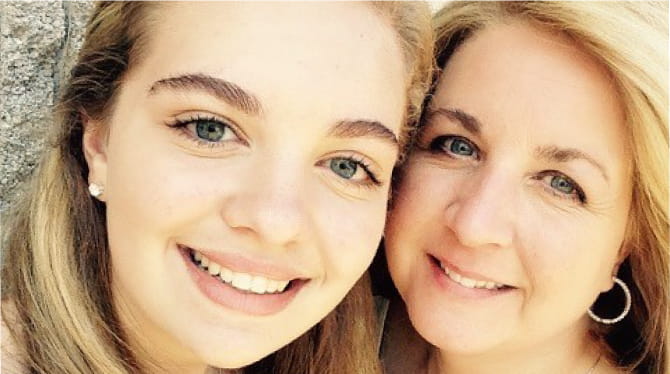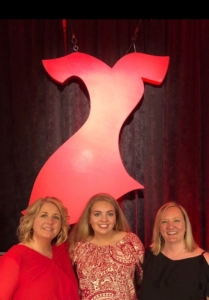United Stroke Alliance in partnership with Medtronic launched a new resource for Stroke Support Groups called The Booster Box. Included in the box is everything a leader needs to conduct a support group meeting for up to 24 attendees.
To receive your free Booster Box please call our office at
309-688-5450 or email info@strokecamp.org to request yours.
Subscriptions will be available for purchase and information will be inside your free box.
*****************************************************************
*****************************************************************
Survey: 1 in 3 adults may have had
warning stroke,
but most didn’t seek help
By American Heart Association News

A third of U.S. adults have had symptoms consistent with a mini-stroke, but nearly no one – only 3 percent – called 911 for help, a survey released Monday shows.
The responses from 2,040 adults in a representative sample showed 35 percent had experienced at least one sign of a mini-stroke, called a transient ischemic attack or TIA. Those who did were more likely to wait, rest or take medicine than to call 911, according to the online survey funded by the American Heart Association/American Stroke Association.
“Ignoring any stroke sign could be a deadly mistake,” ASA Chairman Mitch Elkind, M.D., said in a news release. “Only a formal medical diagnosis with brain imaging can determine whether you’re having a TIA or a stroke.”
It’s a warning that hits all too close to home for Stacy Quinn. She was 41 and in the best shape of her life in December 2014 when she got a horrible headache that wouldn’t go away.
“I was working a lot, and it was around the holidays. So, I blew it off,” said Quinn, who at the time worked in a high-stress communications job at an asset management firm in New York. “Then, I was in a meeting with my boss, and I slurred my speech. I thought, ‘It must be the headache.’”
That evening, she sought help at an urgent care facility, where she was told she was probably having a migraine. At another visit later, she was told it was an earache.
Finally, after 12 days of what she describes as the worst headache of her life, she went to a neurologist who ordered scans – including a magnetic resonance angiogram, or MRA, which provides pictures of blood vessels.
It probably saved her life. Hours later, the doctor called to tell her the emergency room staff at New York-Presbyterian Hospital were awaiting her arrival. She was in danger of having a stroke.
The headaches were caused by a spontaneous carotid artery dissection on the left side of her neck that was blocking 90 percent of the blood flow to her brain. Elkind said anyone with a stroke warning sign that appears suddenly, whether it disappears or not, should call 911 immediately to improve chances of an accurate diagnosis, treatment and recovery.
“Officially, about five million Americans, or 2.3 percent, have had a self-reported, physician-diagnosed TIA, but as this survey suggests, we suspect the true prevalence is higher because many people who experience symptoms consistent with a TIA fail to report it,” he said.
If a diagnosis shows a clot is blocking blood flow to the brain – known as an ischemic stroke, the most common type – the patient may be eligible for a clot-busting drug. In some cases, a medical device called a stent retriever is also used to remove the clot, helping to reduce long-term disability.
After a stroke or TIA, the patient must fully understand their risk factors and work with their doctor on a tailored secondary prevention plan, according to the ASA. This plan may include lifestyle changes, medications to manage known risk factors and the addition of an antiplatelet drug such as aspirin.
The online survey was conducted March 20-26 as part of the ASA’s Together to End Stroke campaign. Among the 35 percent who said they had experienced at least one TIA symptom lasting a few minutes or up to 24 hours:
20 percent had a sudden and unexplained severe headache with no known cause.
14 percent had sudden and unexplained trouble walking, dizziness, loss of balance or coordination.
10 percent had sudden and unexplained numbness or weakness of the face, arm or leg, especially on one side of the body.
10 percent had sudden and unexplained trouble seeing in one or both eyes. --5 percent had sudden and unexplained confusion, trouble speaking or understanding.
Yet, the survey showed only 3 percent of respondents called 911 in response to TIA symptoms. Three out of four respondents didn’t know what a transient ischemic attack was.
Quinn is working to change that. She is hoping to spread her message about stroke warning signs far and wide. “I want to use my experience to help people,” she said. “In my mind, I had images of stroke affecting older people and typically of men, not a woman. That was my big mistake.”

Stacy Quinn was diagnosed with a mini-stroke at 41. (Photo courtesy of Erin Boyle)
To easily remember the most common stroke signs, the ASA recommends learning the F.A.S.T. acronym: Face drooping; Arm weakness; Speech difficulty; Time to call 911.
But there are other stroke signs to be on alert for, too, such as sudden confusion, trouble speaking or understanding; sudden numbness or weakness of the face, arm or leg, especially on one side of the body; sudden trouble seeing in one or both eyes; sudden trouble walking; dizziness, loss of balance or coordination; or – as was the case with Quinn – a sudden, severe headache with no known cause.
Quinn was lucky many times over. Doctors were able to treat her with medicine. She now lives with approximately 35 percent blockage.
“I can’t do things that could put pressure on my neck like go on roller coasters or lift heavy things over my head. I have to watch my stress,” said Quinn, who is 43 and still works in communications, but for a healthcare company in New Jersey.
“I had an angel on my shoulder that I didn’t have a full-blown stroke that created long-term health issues or took my life.”
-----------------------------------------------------------------------------------------------
The following is from United Stroke Alliance, the parent organization for Retreat & Refresh Stroke Camp.
80% of strokes could be avoided.
Every 4 minutes someone dies from a stroke.
There are life saving methods to minimize the effects of stroke - IF YOU GET TREATMENT IN TIME.
The simple F.A.S.T. test mentioned above (Face, Arms, Speech, Time) by AHA/ASA is still valid, however, we have been noticing that, while people are getting better recognizing the F.A.S. part, there is a reluctance to take the T. part seriously.
Here is a better guideline we think should be promoted:
BE-FASTER
B - Balance: Sudden loss of balance.
E - Eyes: Sudden blurry or loss of vision.
F - Face: Sudden numbness, one side drooping - can they smile.
A - Arms: Sudden weakness in arms - can you raise both?
S - Speech: Slurred or mumbling speech.
T - Time: Call 911 NOW
E - Emergency
R - Room: Get to the ER by ambulance, they know what to do FASTER.
While helping survivors at our stroke camps I found that some of them, sufferers themselves or their caregivers, have driven their own cars to the ER because it seemed faster than waiting for an ambulance to arrive. This is not a good idea because many things can happen on the way such as long stop lights, mechanical breakdown, accident, flat tire, or a traffic jam which could mean life or death or serious debilitation to the sufferer.
It is estimated that in each minute of a ischemic stroke, 1.9 million neurons, 14 billion synapses, and 12 km of myelinated fibers are destroyed.
You may think you can get there faster than waiting for an ambulance but the truth is the sufferer will be getting diagnosis and treatment on the way to the ER in the ambulance, and the ER will be getting the stroke team ready and waiting at the door, with a good diagnosis and proper tests in mind. Some ambulances in some cities are even able to administer the clot busting drug TPA on the way to the ER. My hope is that all cities will have this capability, and soon.
Time is extremely important
when treating stroke.
--------------------------------------------------------------------------------------------------
American Heart Association News Stories
American Heart Association News covers heart disease, stroke and related health issues. Not all views expressed in American Heart Association News stories reflect the official position of the American Heart Association.
Copyright is owned or held by the American Heart Association, Inc., and all rights are reserved. Permission is granted, at no cost and without need for further request, to link to, quote, excerpt or reprint from these stories in any medium as long as no text is altered and proper attribution is made to the American Heart Association News.
See full terms of use.
HEALTH CARE DISCLAIMER: This site and its services do not constitute the practice of medical advice, diagnosis or treatment. Always talk to your health care provider for diagnosis and treatment, including your specific medical needs. If you have or suspect that you have a medical problem or condition, please contact a qualified health care professional immediately. If you are in the United States and experiencing a medical emergency, call 911 or call for emergency medical help immediately.



 Care Partners Resource lori@carepartnersresource.com
Care Partners Resource lori@carepartnersresource.com
 Care Partners Resource lori@carepartnersresource.com
Care Partners Resource lori@carepartnersresource.com




















